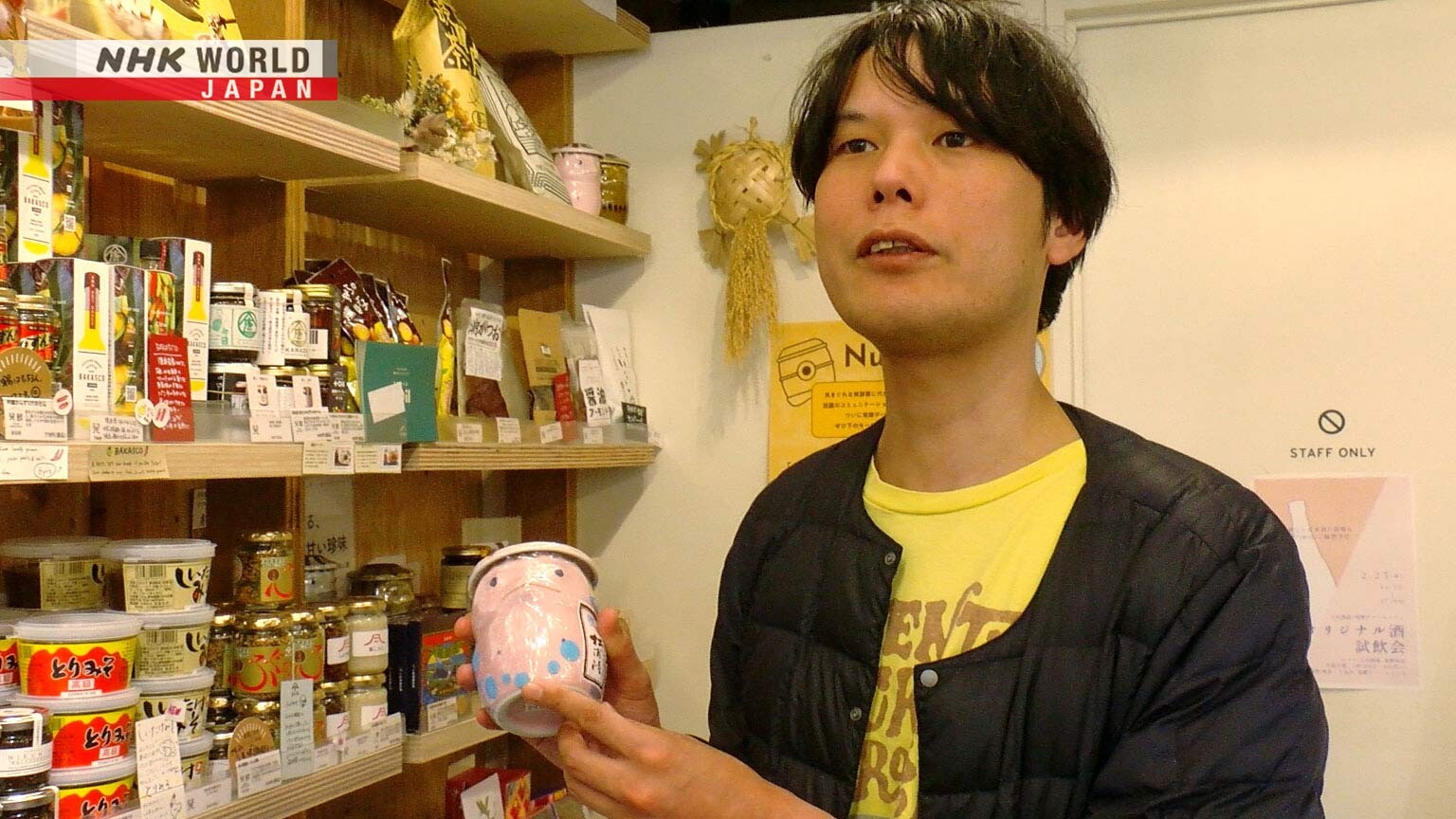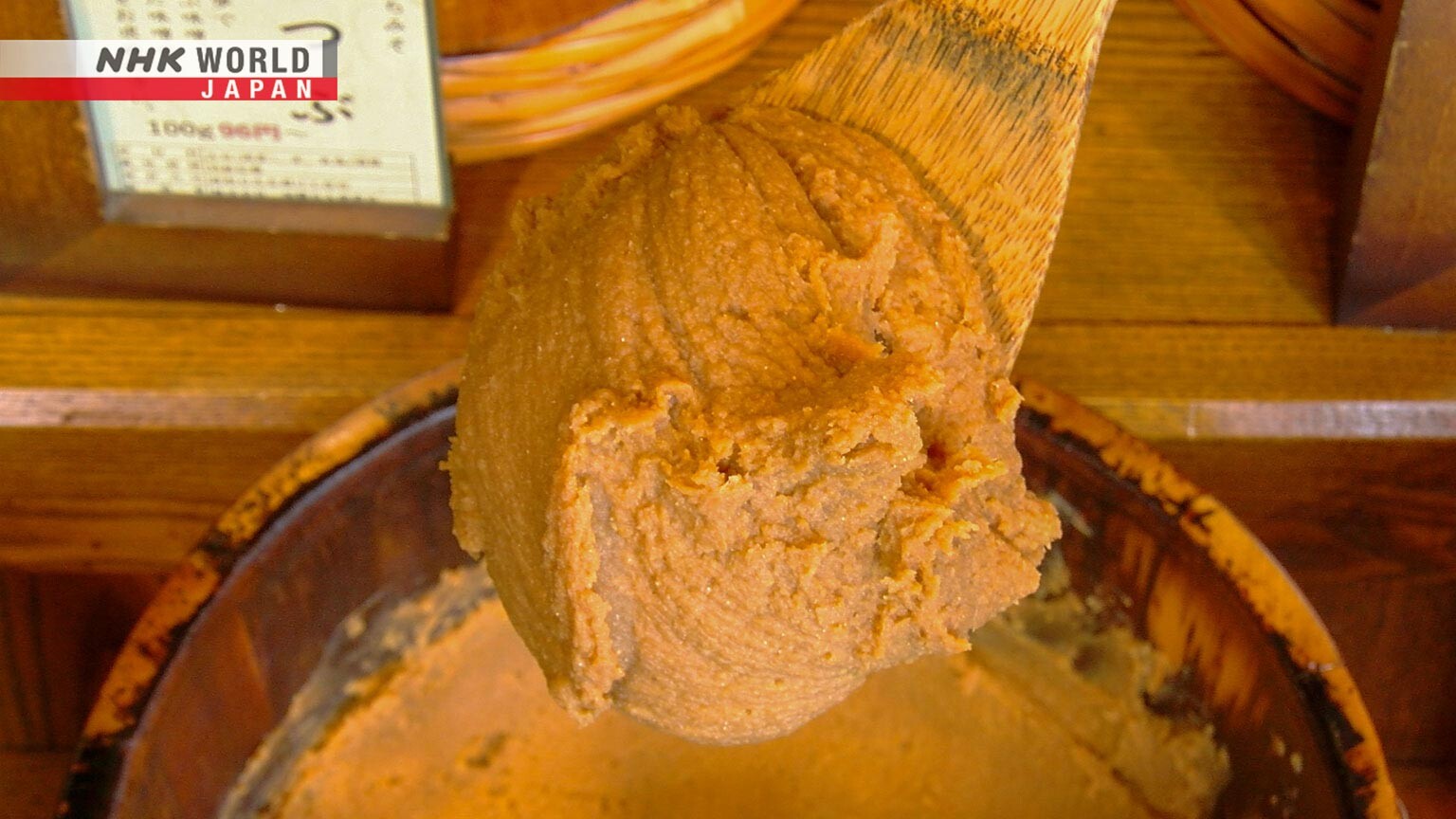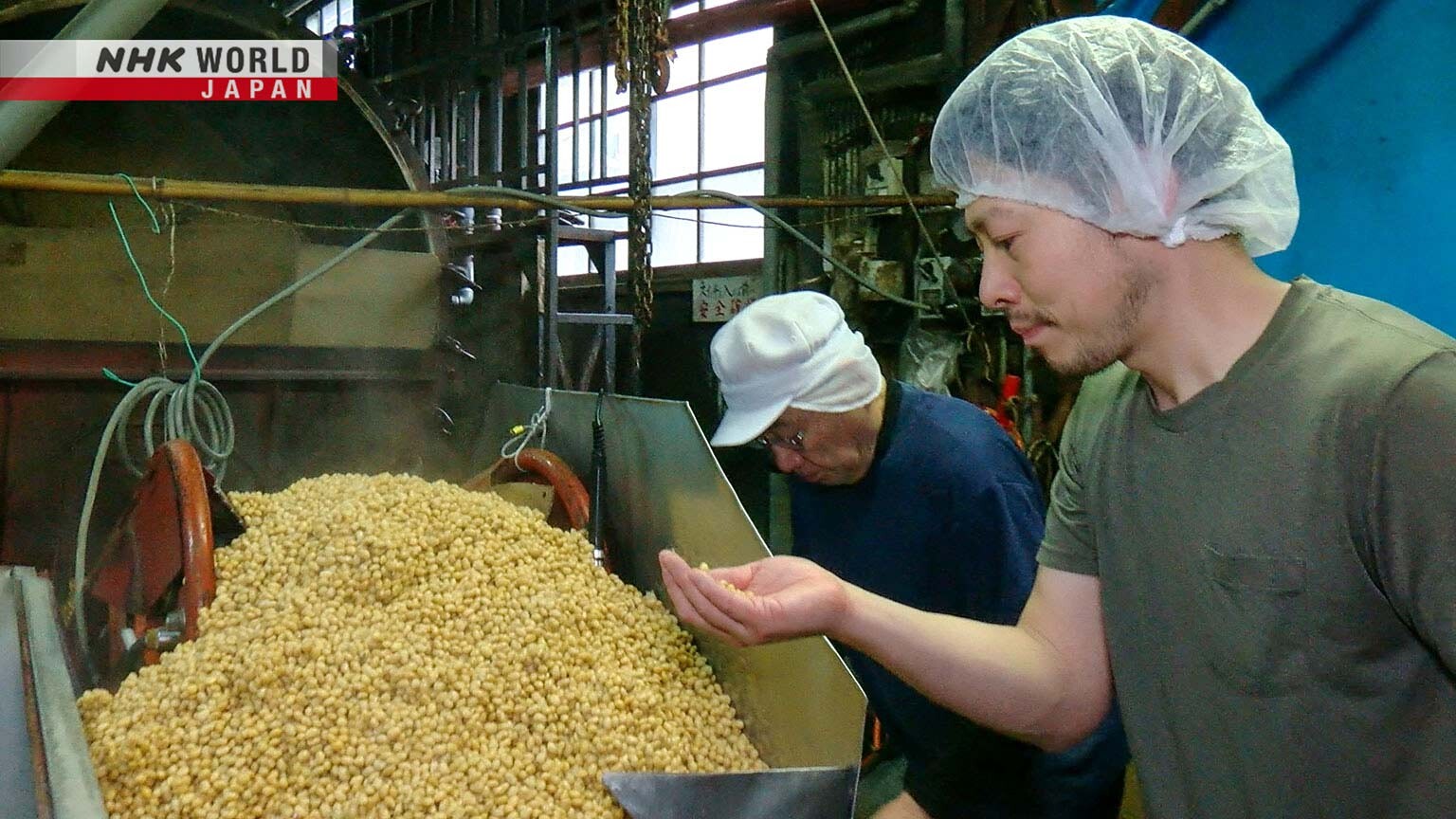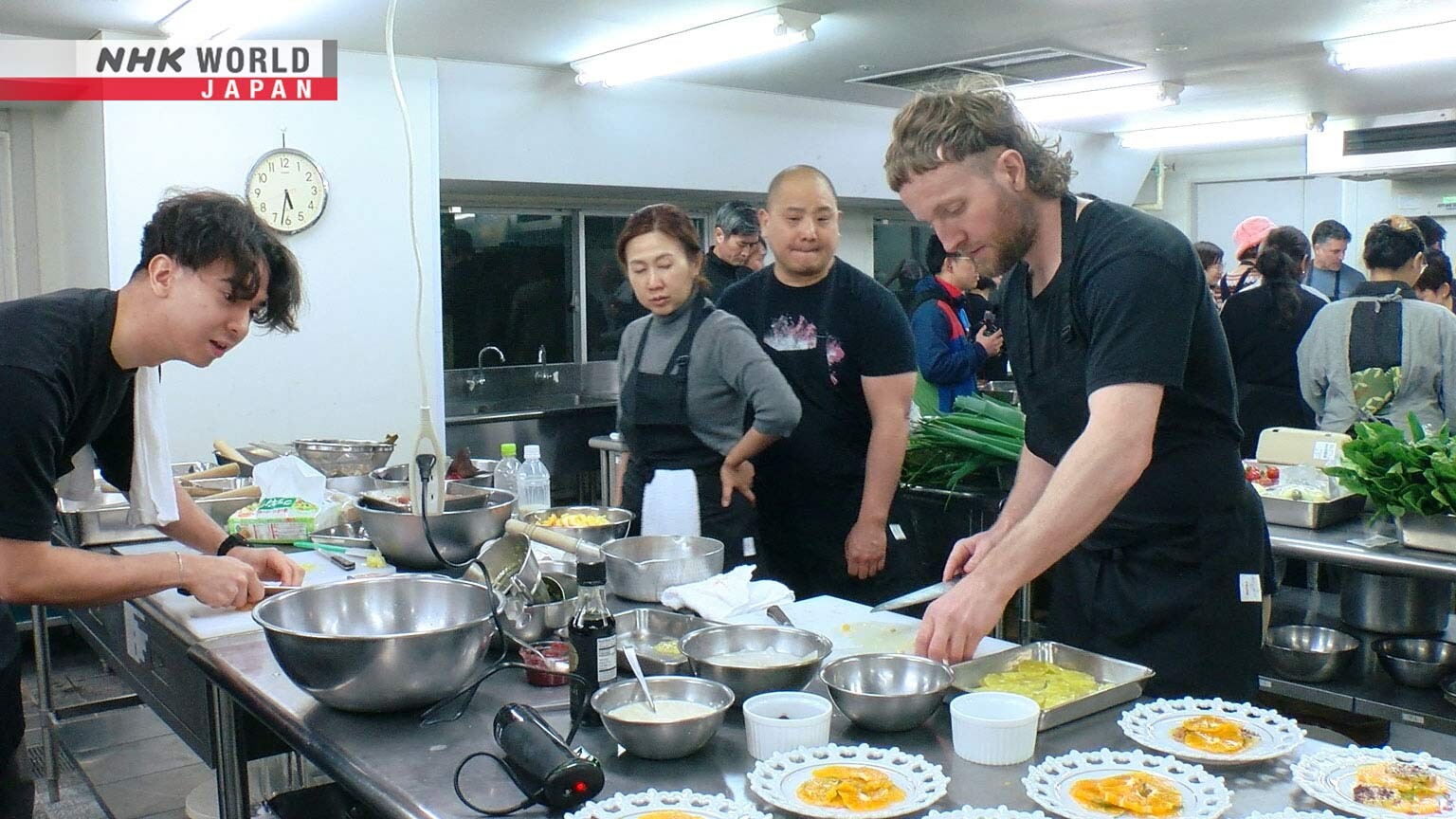Connecting the World Through Fermentation
Japanese fermented foods have a long history, but sake and miso producers face problems as eating habits change. A "fermentation designer" is aiming to bring Japan's fermented culture to the world.




Transcript
Foods fermented with micro-organisms, such as miso and soy sauce...
... are indispensable seasonings in the Japanese diet.
However, changes in dietary habits have driven a number of sake breweries and miso makers out of business.
One person is trying to leverage the global market
to find a way to keep Japan's rich fermented food traditions alive.
Fermented food is getting a lot of attention.
Traditional fermented food, or products from local and small makers...
are selling more around the world, gaining popularity among young people.
We look at some new approaches to Japanese fermented foods.
This shop in a residential area of Tokyo offers fermented foods from all over Japan.
Ogura Hiraku is the owner.
He visits producers across the country to spread awareness of Japan's fermentation culture.
This tea is produced only in Asahi-machi, a town in Toyama Prefecture.
The number of tea fields is very limited, so it's rarely available outside the town.
I helped harvest the tea for two years before I was finally allowed to handle it.
We sell foods deeply tied to the history and culture of each region.
The shop's reputation draws in people from across Japan - and also from abroad.
This one is a ko-ji beer. So instead of malt, there is a ko-ji and the beer without malt.
Well, that's probably worth a try, I think, yeah.
- It's really nice.
- Really good.
- Tastes good?
- Taste good. "Oishi desu."
Hiraku's main job is a graphic designer.
But he became fascinated by the depth of the history and culture of Japanese fermented foods,
and eventually studied microbiology and oenology at university.
Brewing cultures usually have traditional features preserved along with them...
such as old cellars and paddy fields.
There's a history passed down, and many stories to tell.
He has used his expertise as a designer to write a book about Japanese fermented foods.
Videos that use his illustrations to show how to make miso are a big hit.
Hiraku calls himself a 'fermentation designer.'
He tries to communicate Japanese fermentation culture to the world.
His aim is to invite overseas food professionals to Japan
to experience fermented foods for themselves, along with Japanese culture and history.
The best form of promotion is to show people actual production sites.
Seeing what kind of people are making what sort of products...
gives visitors ideas for how they can help.
He chose Odawara City, for his next tour.
Its abundant products from the sea and mountains underpin a unique fermentation culture.
There's one place in particular that Hiraku wants the visitors to see.
It's a miso brewery established more than 170 years ago.
The current seventh-generation owner is Kato Atsushi.
Miso is one of Japan's traditional fermented foods.
It's made by fermenting and maturing a mixture of soybeans, koji mold, and salt.
It's mainly used as a seasoning.
The current trend is for sweeter miso with a high koji content.
But Atsushi values the traditional taste with the natural flavor of the soybeans.
For fermentation, it's crucial to steam the soybeans to just the right degree of hardness.
He checks the texture using a scale and also by chewing the beans,
taking temperature and humidity into account.
How hard is it?
A bit on the firm side, but acceptable.
Still not quite right, though.
Atsushi 's miso cellar is fitted with rails to efficiently maneuver the miso barrels in tight spaces.
This kind of facility, which has been in use for 100 years, is rarely seen elsewhere.
Atsushi says he wants to show off his brewery to make miso more appealing to overseas customers.
The miso industry is exporting more.
If miso makers like us are to survive, I feel we have to follow this trend.
On the day of the tour, nine visitors from the US, Denmark and elsewhere assembled.
They included experts in fermentation and cookery, as well as famous chefs.
The itinerary included a two-day tour of markets and sake and miso breweries.
The function of the stone - there are two functions. One is pressing the miso and pushing out the oxygen.
It was the first time they had actually seen the miso production process with their own eyes.
The craftsmanship and the historic brewery made a strong impression on them.
With the excitement still fresh in their minds, they tasted Atsushi's miso.
The miso was really great. I really appreciate the aged miso,
and that has a lot more umami and flavor development over time
and the level of acidity that really balanced it.
It's very special because you don't see any sort of professional production that looks so vintage.
It's, you know, in the Western world you would never ever find something quite as special as that.
The tour also gave Atsushi a new insight.
Miso makers tend to have a stereotypical view of how miso should be eaten.
It's good that people from overseas show us how they're using it,
and also for us to learn from them.
Finally, a cooking session, where the chefs showed off their skills using fermented foods
such as sake and vinegar, along with local ingredients.
Hiraku gave the participants advice on how to use fermented foods.
A food professional created a sour and spicy curry-flavored soup based on Atsushi 's miso.
The soup stock was made with onions, shiitake mushrooms and pickled plums.
He added wood ear mushrooms, spring onions, dried radish and fish cake.
The novel taste and texture took the Japanese hosts by surprise.
It's curry but it's mild and gentle. Japanese people will love it.
And the soup stock is amazing.
Hiraku hopes to make Japanese fermentation culture a common property
for people all over the world so they can evolve it together.
I think the tour shouldn't simply be about entertaining overseas visitors,
but also about creating a collaboration with locals.
Learning about Japanese culture can inspire visitors.
And the visitors also create something, so there's mutual inspiration.
We did it in a really ideal way!